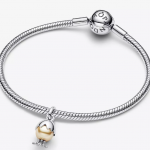When it comes to taking care of your footwear, proper shoe care is the key to ensuring longevity, comfort, and style. Neglecting the maintenance of your shoes can lead to a shorter lifespan, discomfort, and even environmental consequences. In this comprehensive guide, we will delve into the essential aspects of shoe care to help you keep your favorite footwear looking and feeling like new.
Why Proper Shoe Care Matters
The Cost of Neglect
One of the most compelling reasons to care for your shoes is the financial aspect. Quality footwear often comes with a hefty price tag, and failing to maintain them can result in more frequent replacements. By following the right care routine, you can significantly extend the life of your shoes, ultimately saving you money in the long run.
Environmental Impact
Beyond your wallet, there’s an environmental angle to consider. Shoe production has a significant carbon footprint, from the raw materials to the manufacturing process. When you toss out a pair of worn-out shoes prematurely, you contribute to more waste in landfills. Proper shoe care helps reduce this impact by ensuring your shoes last longer.
Essential Tools for Shoe Care
Before we get into the nitty-gritty of shoe care, let’s go over the essential tools you’ll need:
Cleaning Supplies
- Soft-bristle brush
- Mild detergent or specialized shoe cleaner
- Cloth or sponge
- Shoe polish
- Stain remover
- Suede brush (for suede and nubuck)
- Water repellent spray
Protective Gear
- Latex or nitrile gloves
- Eye protection (if using harsh chemicals)
Now that you have your tools ready, let’s move on to the practical tips for keeping your shoes in top shape.

Cleaning and Maintenance
Daily Cleaning Routine
Every time you wear your shoes, they accumulate dirt and grime. To prevent the buildup of dirt and maintain your shoes’ appearance, follow this daily routine:
- Brush off loose dirt and dust.
- Wipe the surface with a damp cloth or sponge.
- Allow your shoes to air dry naturally, away from direct heat sources.
Deep Cleaning Tips
Periodically, your shoes will need a more thorough cleaning. Follow these steps for a deep clean:
- Remove the laces.
- Use a soft brush to scrub the soles and uppers.
- Gently scrub stains with a stain remover or a mixture of mild detergent and water.
- Rinse off any cleaning residue.
- Let your shoes dry thoroughly before re-lacing them.
Proper Storage
Proper storage plays a crucial role in maintaining your footwear’s shape and preventing damage. Consider these storage tips:
Shoe Trees
Invest in quality shoe trees that help maintain the shape of your shoes when they are not in use. Cedar shoe trees also absorb moisture and odors.
Shoe Bags
Store your shoes in individual shoe bags to protect them from dust and scratches. For added convenience, use transparent bags to easily identify your shoes.
Protection from the Elements
No matter the weather, your shoes need protection to withstand the elements and stay in top condition.
Waterproofing
Apply a waterproofing spray or wax to protect your shoes from rain and moisture. Reapply as needed, especially for leather shoes.
Snow and Salt
During winter, be extra cautious. Salt can damage leather and suede. Wipe your shoes clean after exposure to salt and snow, and let them dry naturally.
Extending the Life of Different Shoe Types
Each type of shoe has its unique care requirements. Let’s explore how to extend the life of various shoe types:
Leather Shoes
- Regularly polish and condition leather.
- Rotate your shoes to avoid excessive wear.
- Keep them dry, and use shoe trees to maintain their shape.
Suede and Nubuck
- Brush to remove dirt and restore the nap.
- Avoid water and invest in a specialized cleaner.
- Protect with a suede or nubuck spray.
Athletic Shoes
- Remove insoles to air them out.
- Wash insoles and laces separately.
- Use a gentle detergent for the fabric uppers.

Tips for Specific Shoe Situations
Breaking in New Shoes
New shoes can be uncomfortable at first. To break them in:
- Wear them for short periods initially.
- Use a shoe stretcher if needed.
- Apply a small amount of leather conditioner to soften the leather.
Dealing with Odor
If your shoes have developed an unpleasant odor:
- Sprinkle baking soda or use odor-absorbing insoles.
- Allow your shoes to air out between wears.
Repair and Professional Help
Sometimes, despite your best efforts, shoes need professional attention. Here’s what to keep in mind:
When to Repair
Consider repairing your shoes for significant damage or structural issues, like sole separation or broken heels. Timely repairs can extend their life.
Finding a Reliable Cobbler
Ask for recommendations or read reviews to find a skilled cobbler who can fix your shoes effectively. A good cobbler can breathe new life into your favorite footwear.
Sustainable Shoe Care
As sustainability becomes increasingly important, here are some eco-friendly practices to incorporate into your shoe care routine:
Eco-Friendly Practices
- Use eco-friendly cleaning products.
- Repair and resole instead of replacing.
- Donate or recycle shoes you no longer need.
Shoe Donation and Recycling
Consider donating gently used shoes to those in need or recycling them at designated collection points to reduce waste.
Conclusion
In conclusion, taking proper care of your footwear is essential not only for economic reasons but also for the environment. By following these comprehensive shoe care tips, you can enjoy comfortable, stylish, and long-lasting shoes while reducing your ecological footprint.
Frequently Asked Questions
1. How often should I clean my shoes?
- The frequency of cleaning depends on how often you wear your shoes and the conditions they are exposed to. Daily cleaning routines are ideal, with deeper cleaning as needed.
2. Can I use household cleaning products on my shoes?
- It’s best to use specialized shoe cleaning products to avoid damaging the material. However, mild detergents can be used for some fabrics.
3. What should I do if my leather shoes get wet?
- Allow them to air dry naturally, away from direct heat sources, and use shoe trees to help maintain their shape.
4. Are shoe trees necessary for all types of shoes?
- While shoe trees are beneficial for maintaining shoe shape, they are particularly useful for leather shoes.
5. How can I find a reliable cobbler for shoe repairs?
- Seek recommendations from friends or online reviews, and consider the cobbler’s experience and expertise before choosing one.
 Vertel Jouw Verhaal met Pandora Moments: Ontdek de Betekenis Achter Elke Bedel
Vertel Jouw Verhaal met Pandora Moments: Ontdek de Betekenis Achter Elke Bedel  Lolelife Product Reviews: Perfect Choices for Health and Comfort
Lolelife Product Reviews: Perfect Choices for Health and Comfort  Runway Extravaganza: Highlights from Major Shows
Runway Extravaganza: Highlights from Major Shows  Gloves, Gloves, Gloves: A Touch of Elegance
Gloves, Gloves, Gloves: A Touch of Elegance  Accessorizing 101: Elevate Your Outfits
Accessorizing 101: Elevate Your Outfits  Stylish Hats and Caps: The Crowning Glory
Stylish Hats and Caps: The Crowning Glory  Shine Bright: Exploring the World of Fine Jewelry
Shine Bright: Exploring the World of Fine Jewelry 